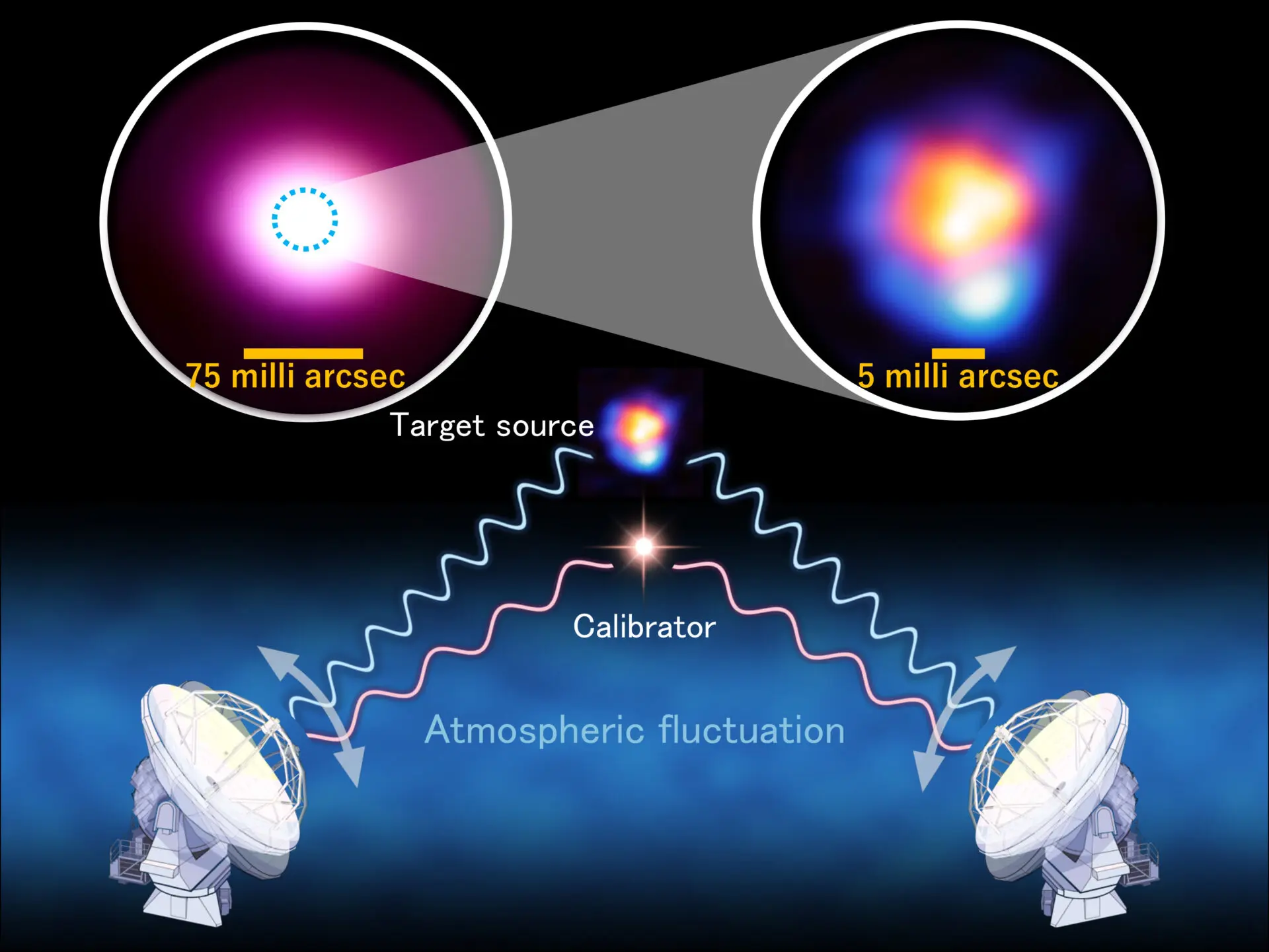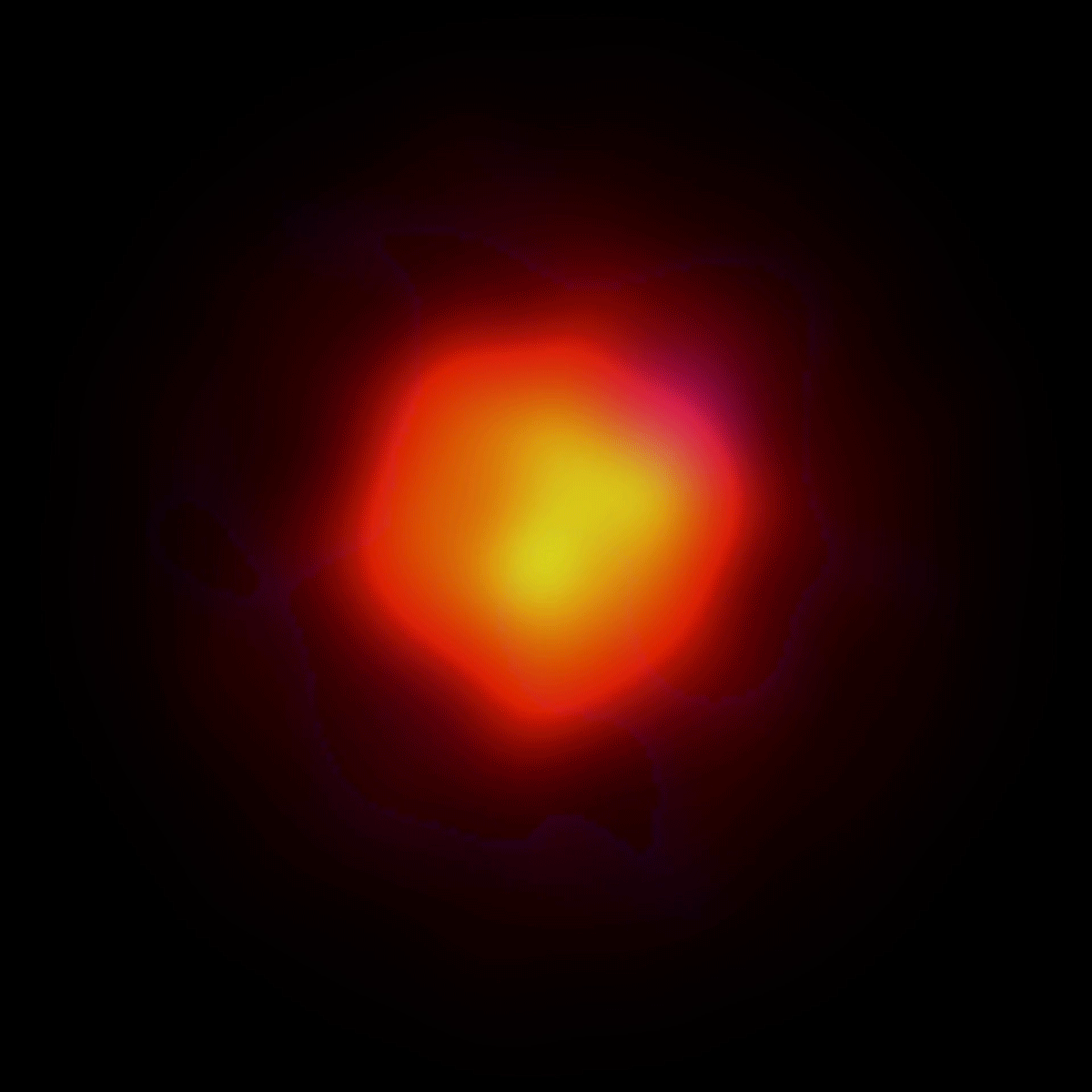Astronomers and engineers at the Atacama Large Millimeter/submillimeter Array (ALMA) have pushed the observatory’s capabilities to the highest resolution yet. They were able to see features 5 milli-arcseconds apart in observations of the aged star R Leporis. That is equivalent to seeing a school bus on the surface of the Moon and it is a 15-fold improvement compared to previous observations of the same object.
The team achieved this by placing antennas in a configuration spanning 16 kilometers (10 miles) and using the highest frequency on the receiver (the so-called Band 10). They also used a new calibration method that helped refine the observations.
And the work paid off. The observations provide the most detailed look yet at the maser around R Leporis. A maser is exactly like a laser, but it is specific to microwave emission. In this case, it’s the emission of hydrogen cyanide that is found in a cloud that surrounds R Leporis.

A schematic view of how using a calibrator to work out the atmospheric fluctuation allows the team to massively improve resolution.
Image credit: ALMA (ESO/NAOJ/NRAO)/Y. Asaki et al.)
“This remarkable achievement in high-resolution imaging through ALMA’s advanced capabilities marks a significant milestone in our quest to understand the Universe. The success of the Band 10 high-resolution observation showcases our commitment to innovation and reinforces ALMA’s position as a leader in astronomical discovery. We are excited about the new possibilities for the scientific community,” Yoshiharu Asaki, the ALMA astronomer who led this project, said in a statement.
Other new details of the cloud of material around R Leporis came to life with a higher resolution; the team was also able to study the movement of this gas. The maser emission is in a specific wavelength and by looking for a Doppler shift – like the pitch of a siren changing if an ambulance is approaching or moving away – the team could work out if the gas was coming towards us or away.

The animation shows the motion of hydrogen cyanide moving around the star R Leporis
Image credit: Y. Asaki & N. Lira – ALMA (ESO/NAOJ/NRAO)
“It is very exciting to demonstrate the technical feasibility and scientific potential of high-frequency observations on ALMA’s longest baselines,” John Carpenter, observatory scientist, added. “We continue to advance ALMA’s capabilities to unveil the Cosmos’ mysteries, now with a sharper eye than ever.”
R Leporis is located 1,350 light-years away – a well-known variable star that shines with a luminosity of about 6,700 times that of the Sun.
Papers describing the technical advancements on ALMA and the results on R Leporis are both published in The Astrophysical Journal.
Source Link: ALMA Radio Telescope Delivers Its Highest Resolution Image Yet